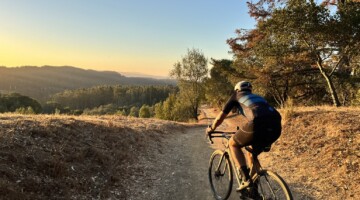After a few friendly gravel races against buddy and teammate Michael van den Ham, Craig Richey decided to head south to the Flint Hills of Kansas for the biggest gravel race of them all. Before leaving British Columbia, he Macgyvered his own aero bars on his Devinci Hatchet, made a plan and was ready to go.
The aero bars were dope, but the real key there was “made a plan.”
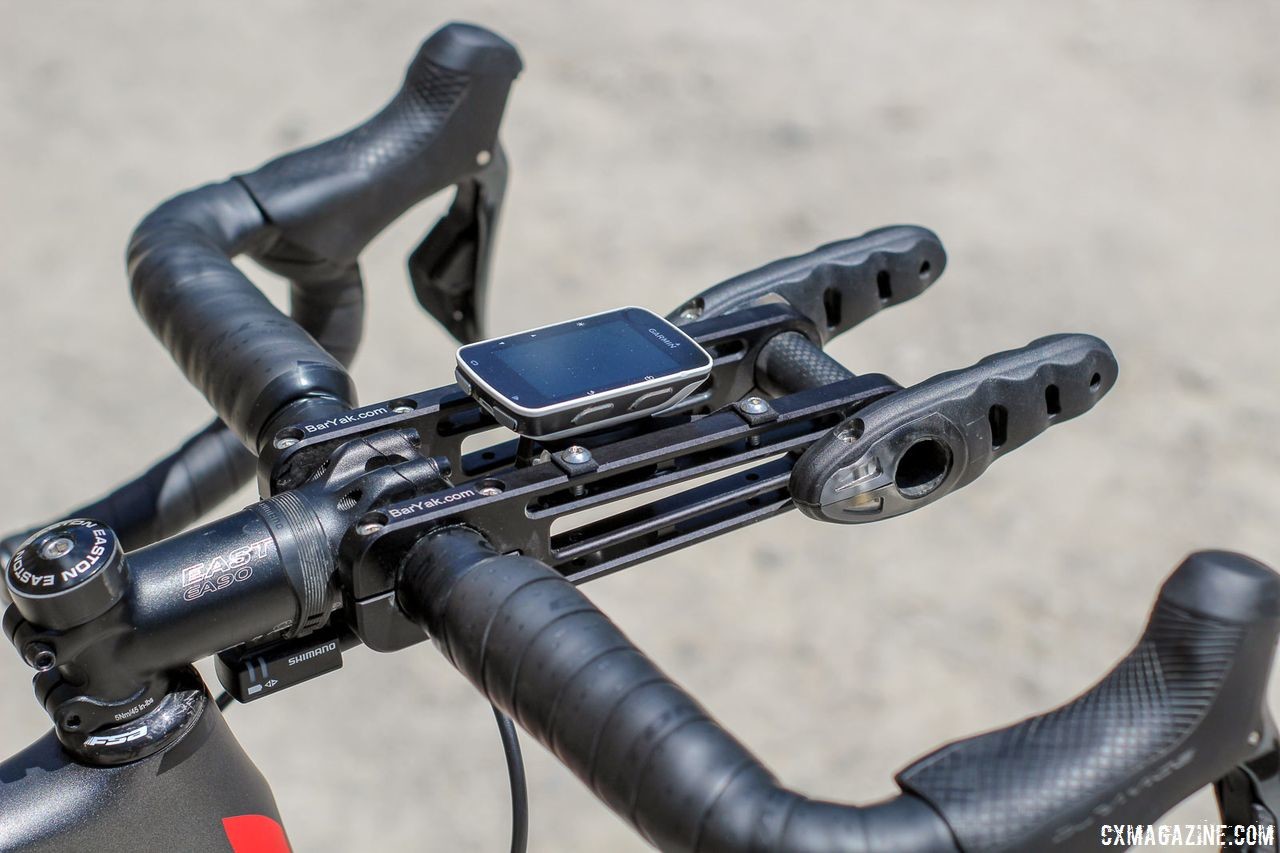
Richey made his aero bars by attaching mountain bike bar ends to BarYak’s Expedition Bar Rails. Craig Richey’s 2018 Dirty Kanza 200 Devinci Hatchet. © Z. Schuster / Cyclocross Magazine
Richey’s approach worked. He finished seventh on the hot June Kansas afternoon, even though, as he tells it, he did not necessarily have top 10 strength.
“I finished seventh overall while balancing family commitments and a career as the Director of Marketing for Race Face and Easton Cycling,” Richey said. “I’m definitely not a ‘pro’ nor do I have the time to train like one, and I was definitely not the 7th strongest rider that day—probably more like 15th—but I raced smart and had a plan.”
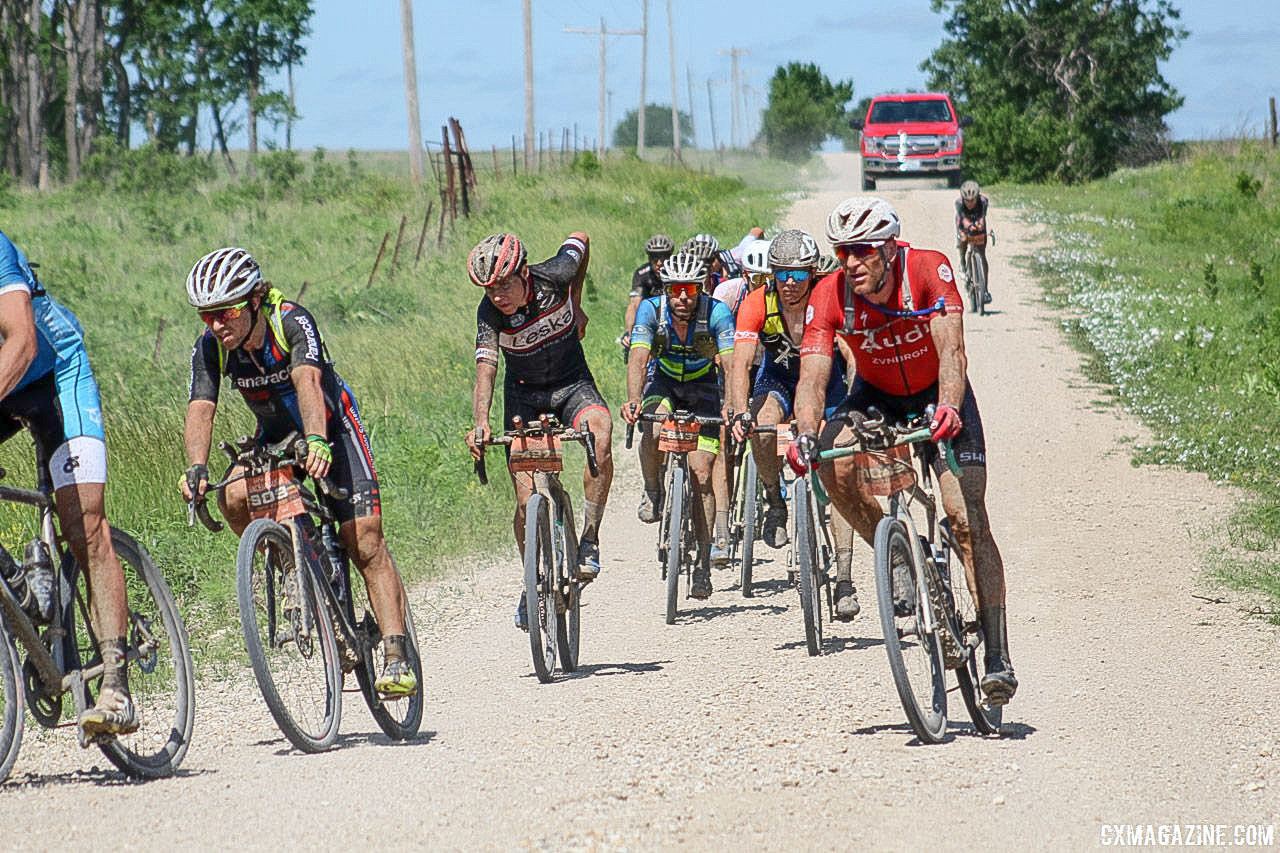
Richey, center, finished 7th in the 2019 DK200. 2018 Dirty Kanza 200. © Z. Schuster / Cyclocross Magazine
At Sea Otter, the most common questions Richey heard were related to how to be successful at the Dirty Kanza. Richey sat down and put together 20 tips to help you get the most out of your Dirty Kanza experience.
Even if you were not lucky enough to make the lottery for 2019, his advice is worth bookmarking if you choose to give it a go down the road.
Craig Richey’s 20 Tips for DK200 Success
Training
1. Get a coach, ideally one that understands that you have other life commitments and cannot dedicate 100% of your time to training.
2. Experiment with different food and drinks while out training. Find what sits well with your stomach because you are going to eat and drink a lot of it during DK.
3. Practice eating while riding gravel and practice eating a lot so your body gets used to absorbing nutrition while out on a ride.
4. Threshold is key for the race. I ended up spending a lot of time during the first 100 miles at 250-300 watts, and that needs to be comfortable. In preparation, I did a lot of long climbs at threshold.
5. You don’t need to do 200-mile training rides. I did one key seven-hour hard ride and a few hard five-hour rides as training. Everything else was shorter rides I could fit in around work.
Equipment
6. Get a gravel bike. A ’cross bike is not a gravel bike. A gravel bike has a lower BB and is generally more stable, which is key when you’re really messed up.
7. Ride a double. I used an Easton 47/32t double with an 11-32t cassette. I rode in a pack for the first 110 miles, mostly letting others dictate the pace, and therefore I was happy I had tighter jumps between gears and could spin at a comfortable cadence.
8. Ride big 38 or 40mm tires with as good a puncture protection as you can find. I also rode narrower 19mm internal rims, which I felt protected the tire sidewall better than my favourite 24mm internal rims I normally use for gravel.
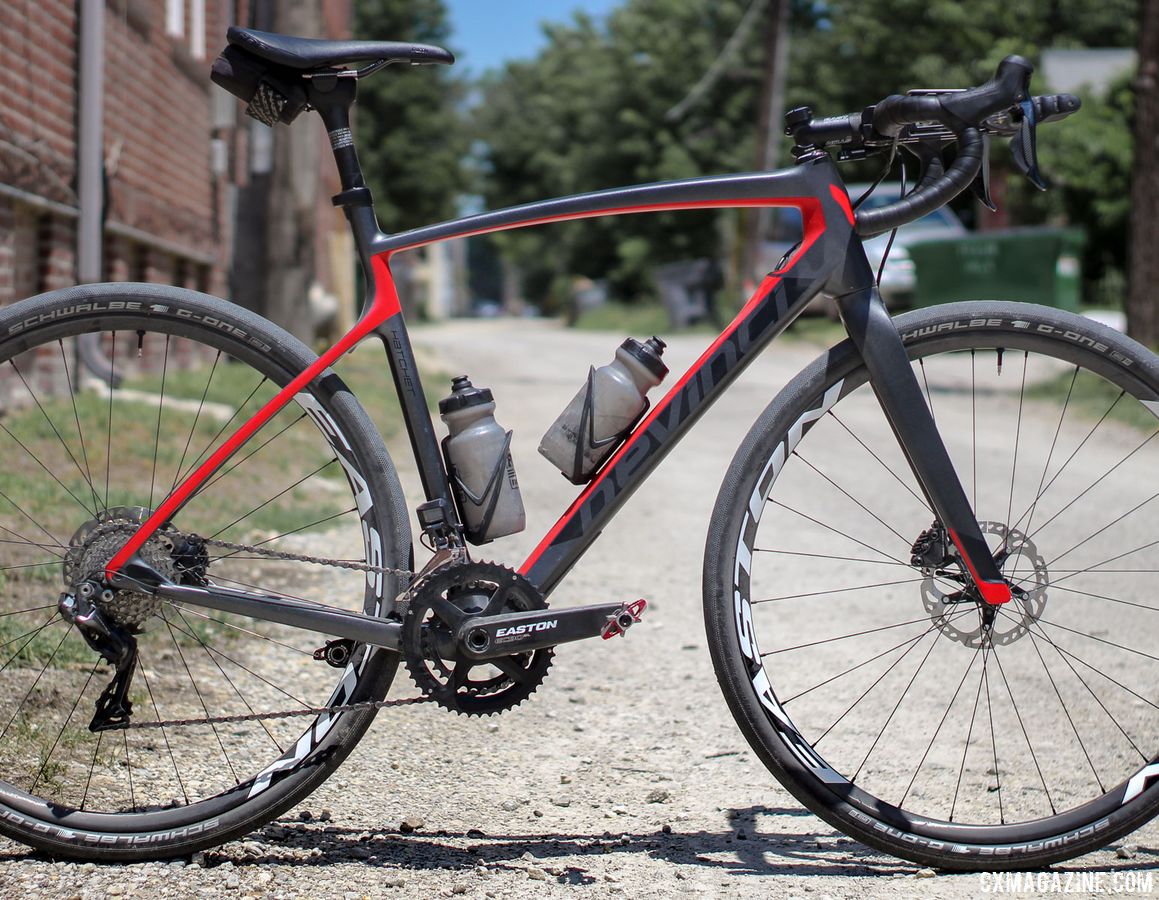
Richey rode a gravel bike with wide tires and a double crank. Craig Richey’s 2018 Dirty Kanza 200 Devinci Hatchet. © Z. Schuster / Cyclocross Magazine
9. Wear mountain bike shoes. There was a short muddy run last year and everyone with road shoes lost time there.
Race Day
10. Pack your feed zone kits the night before and deliver them to your support person, plus open your bar wrappers before putting them in your bag so they are easier to eat while racing.
11. Eat a big breakfast on race day. The pace starts out pretty easy, so don’t worry about your normal pre-race portions or timing.
Race Strategy
12. The first key to success at DK is to not flat. So ride not to flat. Ride where it is smoother, take it easy on descents and avoid riding through tall grass that might be hiding rocks. Some riders said they had bad luck with flats, but in most instances, it is the riders fault they flatted.
13. The second key is to relax. All breaks, attacks and moves happen in slow motion compared to a road race. If something is happening, don’t stress and punch it hard to quickly close, as someone else will probably do that for you and you can follow. Don’t risk a questionable line or pass to make the move, it’s too risky for flats.
14. For the first half, be a follower not a leader. Don’t waste energy fighting through the pack to be close to the front, stop to pee when others do.
15. For the second half go deeper than you ever have. I bonked at 110 miles and got dropped from the lead group. After that, I was talking to trees and could barely hold a wheel at 150 watts. Then I surprisingly rallied and rode the last 30 miles strong.
16. Always Be Crushing (Food and Drinks)
17. Make friends. Riding solo sucks late in the race so find friends and try to stick with them. I waited for another rider after the final feed zone so I wouldn’t have to ride solo.
18. The feed zones are big and crazy, so have a plan and do it quick. A lot of riders lost key groups or had to chase really hard because they were too slow in the first or second feed zone.
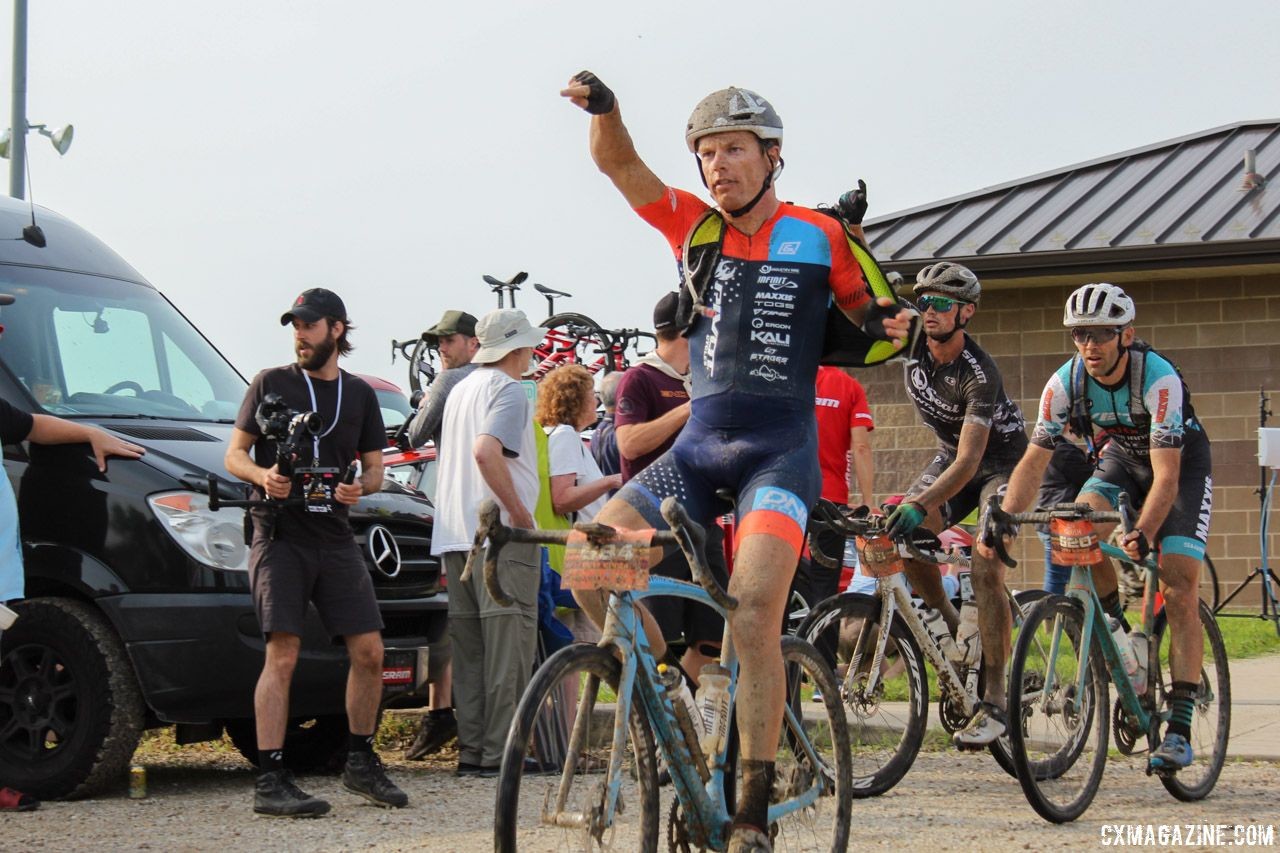
The first step in a good pit stop is finding your pit crew, which was easier said than done at times. 2018 Dirty Kanza 200. © Z. Schuster / Cyclocross Magazine
After the race
19. Accept that you’re going to be messed up physically, but you can still continue on with your life. The day after DK last year I went to the FOX Live Valve launch in Asheville to ride with media, and while I didn’t feel good, I was still able to function.
20. You probably won’t feel good racing for at least a few weeks. ProTour riders recover quickly, normal people don’t. I did a marathon MTB race two weeks after DK, and it was rough. I think it is reasonable to plan on a month until you feel race fast on a bike again.
























